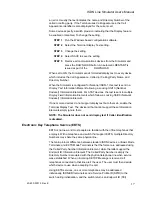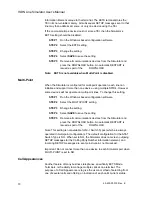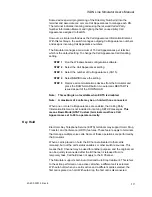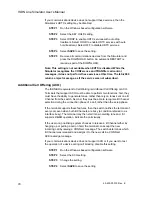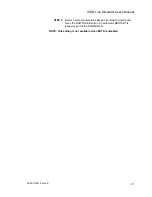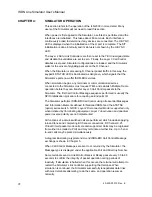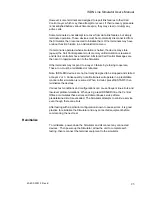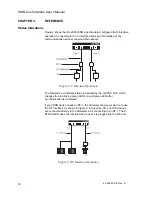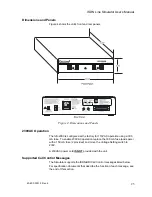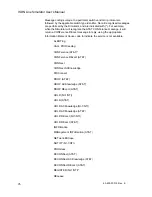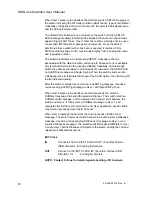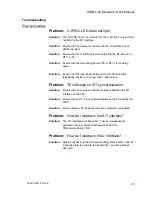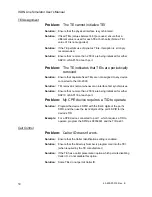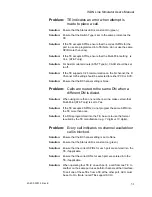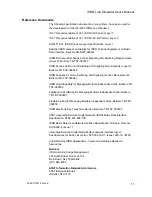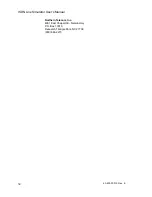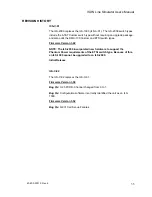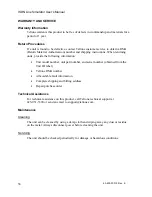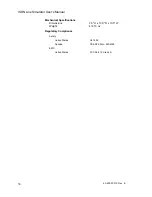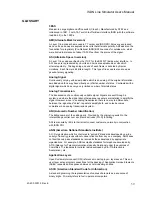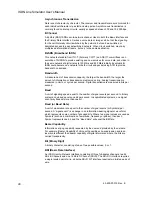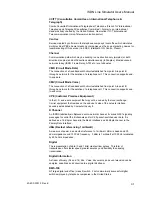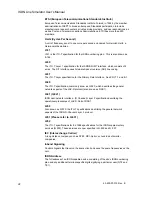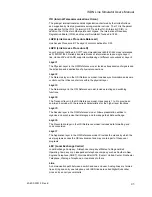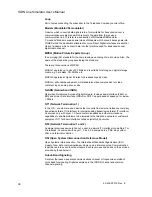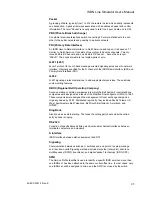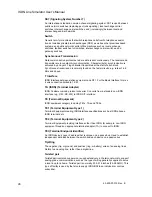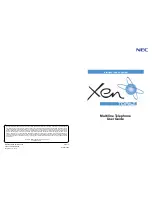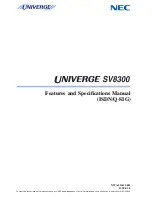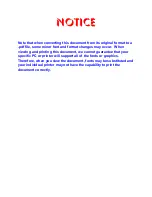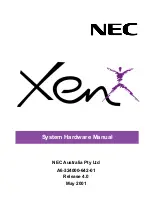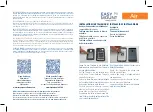
ISDN Line Simulator User’s Manual
40-400-00012, Rev. E
31
Problem:
TE indicates an error when attempt is
made to place a call.
Solution
: Ensure that the Status LED is constant On (green.)
Solution:
Ensure that the Switch Type is set to the same protocol as the
TE.
Solution:
If the TE accepts SPIDs, ensure that the correct SPIDs for the
port in use are programmed into TE (Note: do not use the same
SPID more than once).
Solution:
If the TE accepts SPIDs, ensure that the Multi-Point setting is
Yes. (AT&T only)
Solution:
For basic mode terminals (AT&T Type A), CACH should be set
to off.
Solution:
If the TE supports X.25 communication on the D-channel, the D
Channel X.25 setting should be selected for either PVC or SVC.
Solution:
Ensure that the B Channel setting is None.
Problem:
Calls are routed to the same DN when a
different DN is dialed.
Solution:
When using more than one number per line, make certain that
Multi-Point (AT&T only) is set to Yes.
Solution:
If the TE accepts 2 SPIDs, do not program the same SPID into
the TE more than once.
Solution:
If a DN is programmed into the TE, be sure to use the format
required by the TE manufacturer (e.g., 7 digits vs 10 digits).
Problem:
Every call indicates no channel available or
call is blocked.
Solution
: Ensure that the B Channel setting is set to None.
Solution:
Ensure that the Status LED is constant on (green.)
Solution:
Ensure that the correct SPIDs for each port are entered into the
TE, if applicable.
Solution:
Ensure that the correct DNs for each port are entered into the
TE, if applicable.
Solution:
When operating four TE (2 on each port), a call from one TE to
another on the same port uses both B-channels at that interface.
To call one of these TEs from a TE at the other port, ACO must
be set to On. (Note: not all TEs support ACO).

